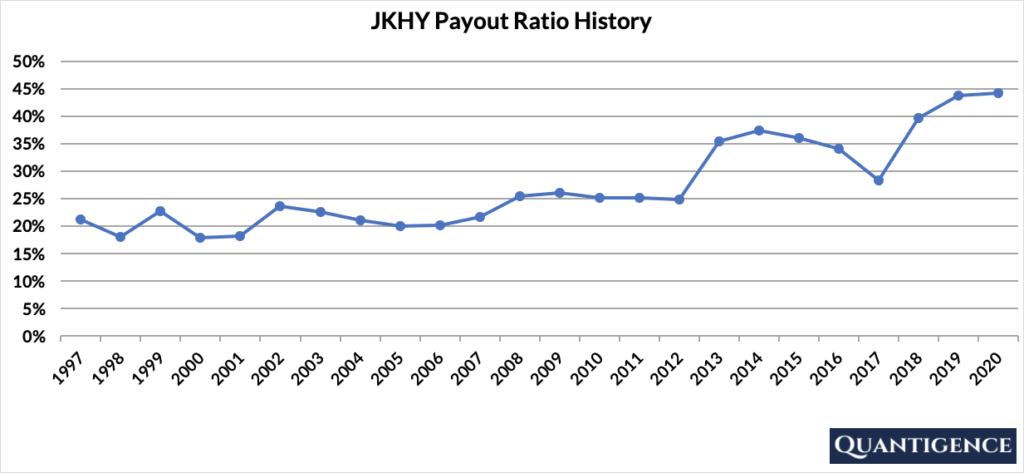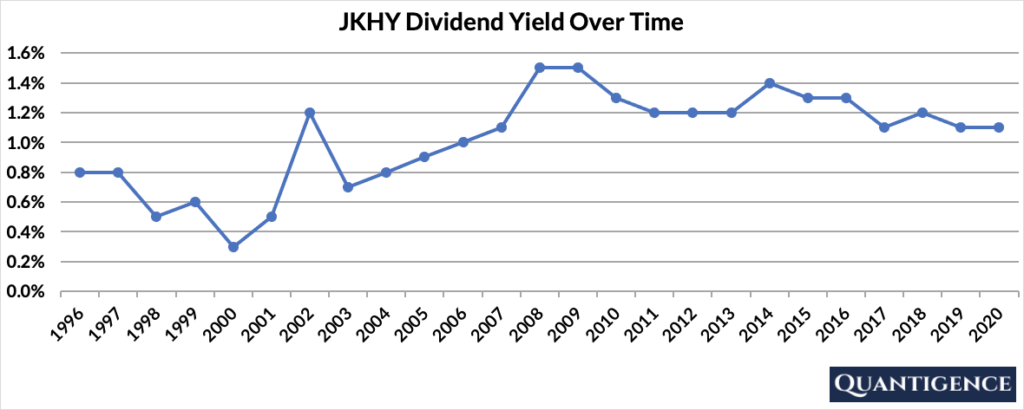Jack Henry & Associates, Inc. (NASDAQ: JKHY) provides technology solutions and payment processing services primarily for financial services organizations in the United States. It operates through four segments:
- The “Core” segment provides information processing platforms to banks and credit unions, which process deposit, loan, and general ledger transactions, and maintain centralized customer/member information
- “Payments” provides secure payment processing tools and services, including ATM, debit, and credit card processing services, online and mobile bill pay solutions, and risk management products
- “Complementary” provides additional software, processing platforms, and services that can be integrated with the company’s core solutions or used independently
- “Corporate and Other” includes revenue and costs from hardware and other products not attributed to any of the other three segments
Revenues are relatively well-diversified between the company’s three main segments.
| Segment | 2020 Revenue (in million USD) | Revenue % |
| Core | 582 | 34% |
| Payments | 598 | 35% |
| Complementary | 463 | 27% |
| Corporate and Other | 54 | 3% |
JKHY’s Dividend History and Payout Ratio
JKHY has a track record of paying and increasing dividends for 31 consecutive years, a record that the company will likely feel highly obligated to maintain. In 2020, the company paid out only 44% of its profits in the form of dividends. This low payout ratio enables the company to keep growing its dividend in the future, even if earnings are not growing or temporarily declining. In looking at the company’s payout ratio history over the past 23 years, it’s been relatively stable with much room to grow if needed.

When Does JKHY Pay Dividends?
JKHY pays a quarterly dividend typically announced on various dates in the months of February, May, August, and November. The ex-dates are in February, May, September, and November, and payments are made in March, June, September, and December.
What is JKHY’s Dividend Yield?
Dividend yield (the annual dividend paid divided by the share price) shows the 1-year return on a stock purchase in the form of dividends. In 2020, JKHY had a dividend yield of 1.1%, below our investment universe average of 1.8%. The stock’s historical yield has been moving between 0.3% and 1.5% with an average of 1.0%.

JKHY’s Dividend Growth Rate
JKHY has grown its dividend payout by an average of 16.3% every year for the past 10 years. However, that growth seems to be slowing lately with the annual dividend increase averaging 11.5% over the last five years (anything in the double digits would be considered excellent). Below, you can see the effect a 10-year growth rate of 16.3% has on JKHY’s dividend assuming a starting yield of 1.1%.
| Years | Dividend Growth | Yield Calculation | Yield % |
| Year 0 | 0% | 1.10% | 1.1% |
| Year 1 | 16.30% | 1.1%*1.163 | 1.28% |
| Year 2 | 16.30% | 1.1%*(1.163)^2 | 1.49% |
| Year 3 | 16.30% | 1.1%*(1.163)^3 | 1.73% |
| Year 4 | 16.30% | 1.1%*(1.163)^4 | 2.01% |
| Year 5 | 16.30% | 1.1%*(1.163)^3 | 2.34% |
| Year 6 | 16.30% | 1.1%*(1.163)^6 | 2.72% |
| Year 7 | 16.30% | 1.1%*(1.163)^7 | 3.17% |
| Year 8 | 16.30% | 1.1%*(1.163)^8 | 3.68% |
| Year 9 | 16.30% | 1.1%*(1.163)^9 | 4.28% |
| Year 10 | 16.30% | 1.1%*(1.163)^10 | 4.98% |
If you bought JKHY at a yield of 1.1%, an average 10-year dividend growth of 16.3% would mean your yield would reach 4.98% 10 years from now. This is called “yield on cost,” and shows the yield we’re receiving on the original amount of money we invested.
How Strong is JKHY’s Dividend?
When evaluating dividend stocks, we use our own methodology which is based on Q-scores which consist of seven factors:
- Years paying and increasing dividends
- Market cap
- International sales
- Yield
- Payout ratio
- Five-year dividend growth rate
- Ten-year dividend growth rate
We calculate each of these factors and summarize them in a final proprietary Q-score. To learn more about how we calculate Q-scores, check out our piece on “7 Factors Used to Select Dividend Growth Stocks.”
The Q-score for Jack Henry & Associates is presently 9.6, which ranks the company as the third by Q-score in the “Information Technology” sector, out of three companies. We reward the stock for its five-year and 10-year dividend growth rate as well as its low payout ratio. JKHY’s dividend growth track record and market cap are mediocre, so they contribute little. We penalize JKHY for its low yield and lack of international sales.
Even though there are not many options to choose from in the IT sector, we chose not to include Jack Henry & Associates in our final 30-stock dividend growth portfolio because of its low Q-score.
[optin-monster slug=”ziwrnabndtepsyq0fyai”]


